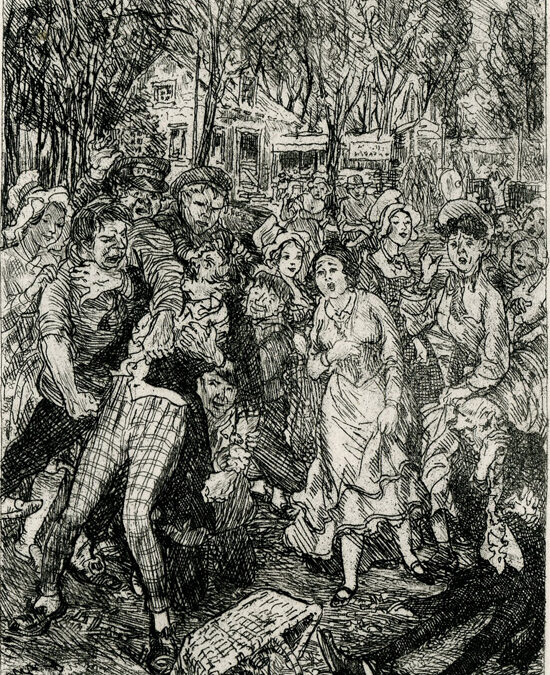De Kock sometimes styled the French Dickens, is known for his broad portrayals of the Parisian working-class society, affairs, cabarets, and other entertainment. In Monsieur Dupont, the entertainment spotlighted is a tumultuous picnic at Romainville, still a popular Parisian destination. (De Kock uses faire une partie instead of pique-nique.)
The picnic on September 20th, the name day of Saint Eustache, begins well. The party is meant to arrange a marriage between Dupont, middle age, stupid, vain, modestly wealthy, and Eugenie, the Moutonnet’s pretty daughter. It promises to be an unhappy arrangement because Eugenie is repelled Dupont and hopelessly in love with Adolphe Dalmont, a poor man with an uncertain future. At the time of the picnic, Eugenie will inevitably be a loser.
The provisions are abundant and meant to impress Dupont, the wealthy grocer. Wicker baskets are crowded with roast turkey veal pasty, tongue sausages, fruits especially figs, fruits especially figs, cheese, bread, muscat, anisette, and other wines.
As expected, after eating, drinking, and dancing in the September warmth, everyone is out of sorts, if not drunk. A fight erupts with other picnickers, and poor Bidois, the family lackey, gets inadvertently mobbed and punched. At last, Madame Moutonnet says, “Come, come; let us go; let us leave this accursed wood. We have had enough of Romainville for some time.”
Amid the confusion, it begins to rain, a sure sign that the M. Dupont trial in love will not end well. It does not, for, after his marriage, he dies in an accident. Then true love wins, and Adolphe inherits a fortune, and he reunited with Eugenie, and they marry.
Featured Image: “Poor Bidois, who had been drawn into the midst of the tumult . . . received upon his nose the blow intended for the toymaker.”
See Paul de Kock. Monsieur Dupont (1825). Illustrations by John Sloan. Edited by trans. Mary Hanford Ford. Boston: Frederick J. Quinby Company, 1902.

